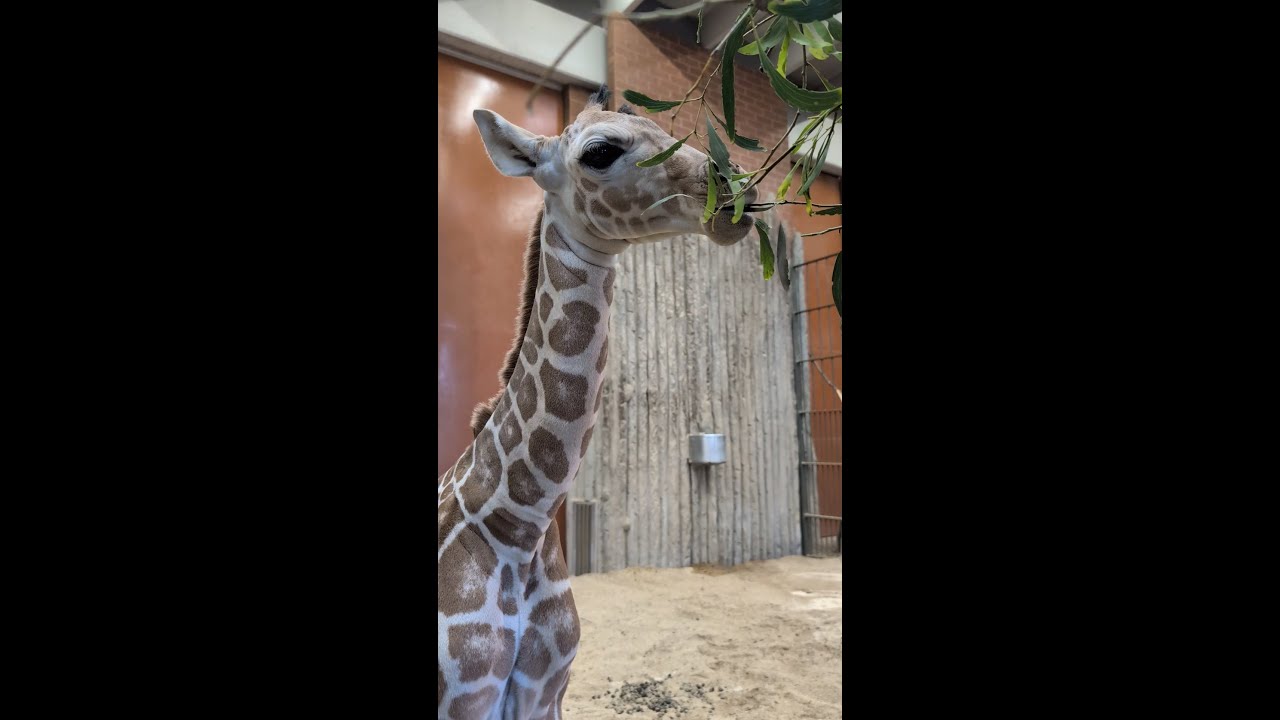- The fascinating birth and naming process of baby giraffes in zoos.
- The significance of public engagement initiatives in wildlife conservation efforts.
- The role of zoological institutions in educating the public about giraffe species and their habitats.
- Understanding the critical importance of giraffe conservation in the wild.
- The impact of video media in fostering connections between communities and wildlife.
The birth of a baby giraffe in a zoo is a momentous event that captures the imagination of the public and offers an educational platform to discuss the nuances of giraffe biology, zoo management, and wildlife conservation. These towering mammals, despite their serene demeanor, are emblematic of the wonders of the African savanna. Their introduction to zoo habitats not only brings joy but also serves as a pivotal point for raising awareness and fostering a deeper understanding of giraffes’ roles in ecosystems. A typical feature of such events is a public invitation to participate in naming the newborn giraffe, blending community involvement with conservation education.
Naming a baby giraffe is more than a whimsical exercise; it serves as a conduit for public participation and engagement in conservation initiatives. When a zoo invites the public to help name their baby giraffe, it catalyzes a relationship between the community and the animal. This request often accompanies educational campaigns about the giraffe’s native habitats, behaviors, and conservation status in the wild. The excitement surrounding the naming process draws interest and attention to broader efforts in preserving natural environments. In educational settings, this can galvanize support for wildlife protection initiatives and generate much-needed funding through donations and zoo patronage.
Public engagement through naming contests is a compelling strategy for wildlife conservation. Such initiatives foster a sense of ownership and responsibility toward the animal, encouraging individuals to adopt sustainable practices and support conservation programs. Moreover, public participation in these contests serves as an introduction to the life sciences, prompting curiosity and learning about the giraffe’s ecology, biology, and anatomy. These campaigns often feature updates about the baby giraffe’s development through various media platforms, keeping the audience invested in its progress and, crucially, in giraffe conservation efforts worldwide.
Zoos play a critical role in wildlife education, particularly in the context of giraffes, whose populations face increasing threats due to habitat loss and poaching. By housing and caring for giraffes, zoos provide a unique opportunity for visitors to witness these magnificent creatures up close, facilitating a greater appreciation of their physical adaptations and social behaviors. Interpretative signage, guided tours, and interactive exhibits offer additional learning opportunities, promoting understanding of giraffe ecosystems and the challenges they face in the wild. Through partnerships with global conservation organizations, zoos contribute to breeding programs that enhance genetic diversity and contribute to species survival.
The use of video media provides a dynamic tool for connecting communities to wildlife and fostering empathy and action for conservation causes. Videos highlighting the birth of a baby giraffe or chronicling its growth are shareable, engaging platforms that reach wide audiences beyond geographical boundaries. These visual narratives illustrate not only the life of the giraffe but also underline the importance of preserving its habitat. By doing so, videos effectively bridge the gap between distant field conservation initiatives and the local zoo experience. This amplifies the message of conservation, creating a persistent and emotionally resonant call to action among viewers.
Conservation of giraffes in their natural habitats is of paramount importance, as these majestic creatures are increasingly vulnerable due to human actions. Habitat destruction, illegal hunting, and climate change pose significant threats to giraffe populations. Conservation efforts strive to mitigate these threats through research, habitat protection, and local community engagement. Establishing protected areas, enforcing anti-poaching laws, and educating communities on the ecological significance of giraffes are essential components of these efforts. Moreover, global collaboration among conservationists, governments, and non-governmental organizations enhances the impact and effectiveness of these initiatives.
In summary, the process of naming a baby giraffe extends far beyond a nominal exercise. It encompasses aspects of public engagement, education, and conservation strategy, all of which are interconnected with the well-being of giraffe populations in zoos and the wild. Such initiatives highlight the indispensable role of zoos in conservation education and polarize public support for preserving wildlife. Through video media and educational campaigns, the story of a baby giraffe becomes a beacon of hope and activism for the unknown future of these gentle giants and the ecosystems they inhabit. By uniting communities with a shared purpose and encouraging actions that support giraffe conservation, we take meaningful steps toward preserving our planet’s biodiversity.
*****
Source Description
Our baby reticulated giraffe continues to thrive! He’s still nursing like a champ and has started investigating and nibbling on solid foods. 🦒🍃
Now, we need your help choosing the perfect name for him! With a donation of $5 per vote, you can support DZCA and help pick the best name for BB’s baby. Today we’re highlighting the name Thorn! A top name choice for some of our Animal Care Specialists, Thorn is inspired by the acacia thorn, a favorite woody food for giraffes.
Vote now: https://support.denverzoo.org/baby-giraffe-naming-contest
🎥: Animal Care Specialist Christa K.


